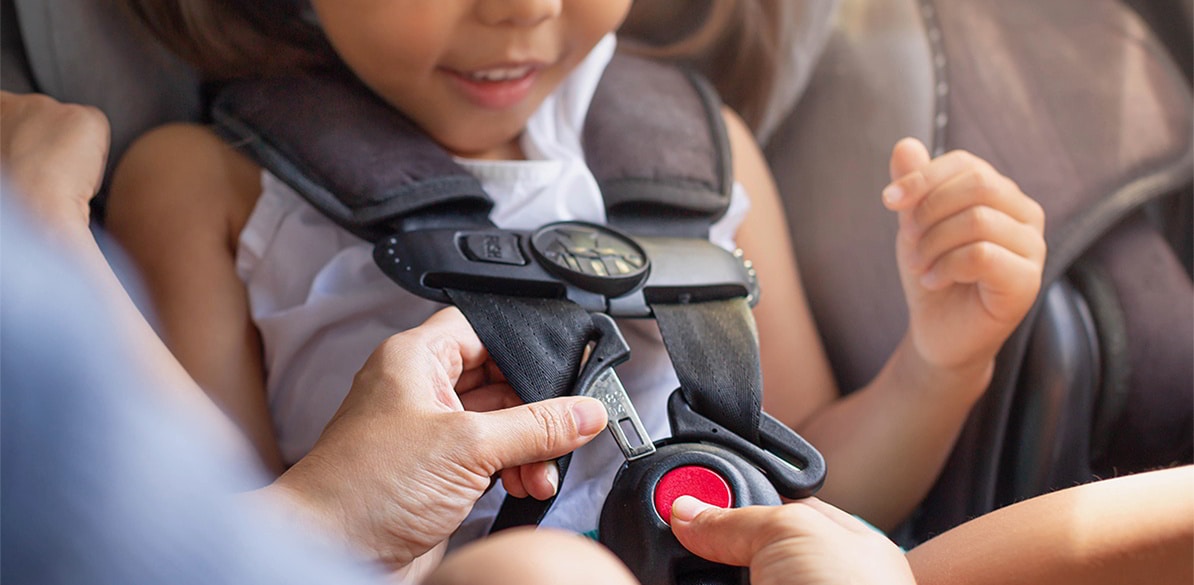Shoulder protectors
Their importance in child car seats

Road Safety
First, let’s start by looking at what shoulder protectors are. They are pads that cover the upper part of the harness of the child seat. In general, these protectors are attached to the seat by a strap that goes around the area where the harness enters.
Their basic function is to decrease the stress on the chest by distributing and absorbing energy and reducing the displacement of the child’s head in the event of a collision.
How do they do this? The basic principle involves increasing the contact surface. If we increase this, we decrease the pressure exerted on the surface and, therefore, reduce the specific stresses on the child’s chest. In addition, if we look at the inner side of the shoulder protector, most have a more abrasive surface. This increases the protector’s friction with the child’s chest and shoulders, stopping the chest, and consequently the head, moving forward so much during a collision. This effect reduces the amount of survival space needed inside the vehicle, meaning that using these protectors is an important improvement.
Good protectors can reduce the displacement of the child’s head by about 50 mm and reduce head and chest acceleration by about 10%.
They should be positioned as straight as possible once the harness is fastened, so that the contact surface is as large as possible, making their action more effective.
On the other hand, for a shoulder protector to be the most effective it can be, the harness must be correctly adjusted and there must be no slack (in the harness tension).
In recent years, the use of shoulder protectors has become more widespread in the use of booster seats with backrests, where similar benefits are sought in terms of chest retention, reduced head displacement and decreased chest acceleration.
Shoulder protectors are features that have evolved a great deal over recent years, becoming important elements in the proper dynamic performance of today’s child seats.
